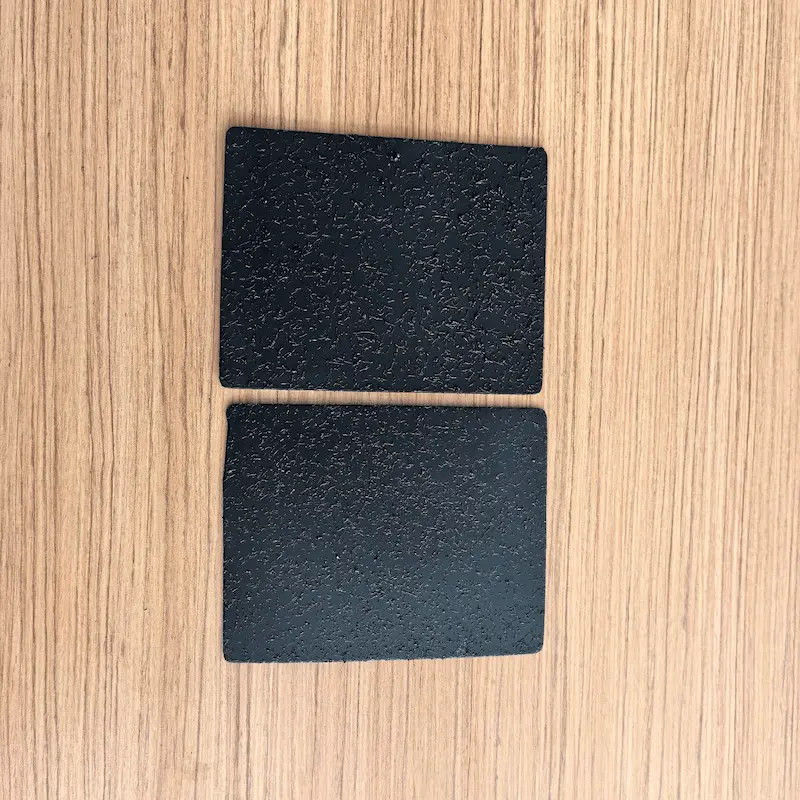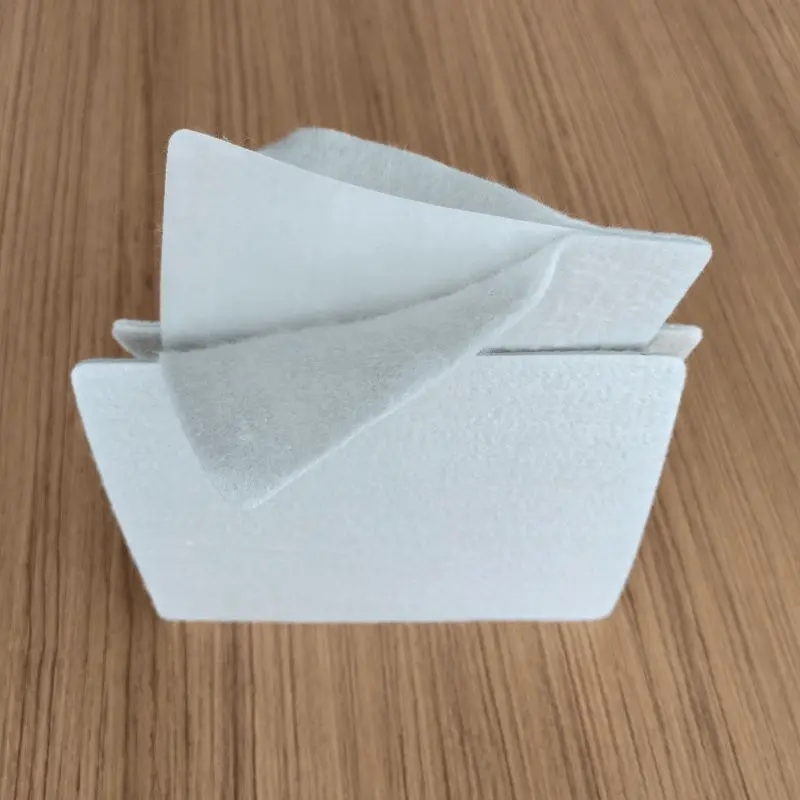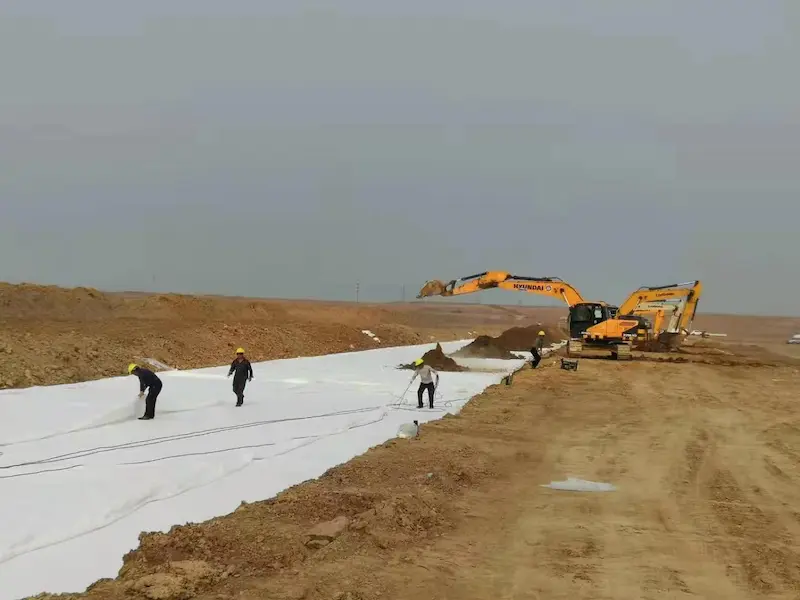Geosynthetic Materials: The Key to Infrastructure Strengthening
In today's fast-paced world, where infrastructure development and urbanization are on the rise, the need for durable and sustainable materials has never been greater. Geosynthetic materials, often overlooked in favor of more traditional construction materials, are quietly revolutionizing the way we build and strengthen critical infrastructure.
902056.webp)
(3D black filament composite drainage net)
What are geosynthetic materials?
Geosynthetic materials are a class of synthetic materials that are designed to withstand the demands of the natural environment. They are often used in civil engineering projects to enhance the performance of soil and concrete. These materials range from geotextiles (used to separate and filter soil layers), to geogrid (designed to reinforce soil and concrete), to geomembranes (used as waterproofing barriers).
352985.webp)
(White filament geotextile black geomembrane core-composite geomembrane)
Why use geosynthetic materials?
The strengthening capabilities of geosynthetic materials are unparalleled. They can significantly improve the load-bearing capacity of structures, reducing the risk of failure and increasing the lifespan of infrastructure. This is achieved through a combination of factors:
Durability: Geosynthetic materials are designed to withstand a range of environmental conditions, including temperature variations, moisture, and erosion. This makes them an excellent choice for projects that require long-term performance.
Versatility: These materials can be used in a variety of applications, from road construction to dam reinforcement, from bridge foundations to retaining walls. Their adaptability allows engineers to design structures that are both functional and sustainable.
Cost-effectiveness: While the initial cost of geosynthetic materials may be higher than some traditional materials, their longevity and performance make them a cost-effective choice in the long run. The reduced need for maintenance and repairs, along with the increased lifespan of structures, can significantly offset initial costs.
Environmental friendliness: Geosynthetic materials are often made from recycled materials or sustainable sources, making them environmentally friendly alternatives to traditional construction materials. Their use can help reduce waste and lower the carbon footprint of infrastructure projects.
Geosynthetic materials play a critical role in today's infrastructure development. As our need for sustainable, durable, and cost-effective solutions grows, so too does the importance of these remarkable materials. By investing in innovative technologies like geosynthetic materials, we can build a stronger, more resilient infrastructure that will serve our communities well into the future.

(Black double faced textured geomembrane 1.5mm)
Strengthen application
487806.webp)
(White filament geotextile black geomembrane core-composite geomembrane)
Geosynthetics in Reinforced Soil Structures:
One primary application of geosynthetic materials lies in the construction of reinforced soil structures. These structures, such as retaining walls, embankments, and slopes, benefit from the inclusion of geosynthetics to provide additional stability and reinforcement. By incorporating materials like geogrids or geotextiles, engineers can effectively counteract soil erosion and lateral movement, ensuring long-term structural integrity.
Roadway Construction and Pavement Reinforcement:
Geosynthetic materials are extensively employed in roadway construction to enhance the performance and lifespan of pavements. Geogrids, in particular, are often used to reinforce asphalt and concrete pavements, reducing reflective cracking and improving load-bearing capacity. This application not only strengthens the road structure but also minimizes maintenance requirements, offering a cost-effective solution for transportation infrastructure.
Landfill Liners and Closure Systems:
In environmental engineering, geosynthetics play a crucial role in landfill containment systems. Impermeable geomembranes and geocomposite liners are used to prevent the leaching of contaminants into the surrounding soil and groundwater. Additionally, geosynthetic covers contribute to the closure and capping of landfills, creating a stable and environmentally secure barrier.
Erosion Control and Slope Stabilization:
Geosynthetic materials are instrumental in erosion control and slope stabilization projects. Geotextiles, for example, are employed to reinforce and protect soil surfaces, preventing erosion caused by wind, water, or human activities. In steep slopes or areas prone to landslides, geogrids provide effective stabilization by confining soil particles and distributing applied loads.
Water Management and Coastal Protection:
The versatility of geosynthetic materials extends to water management and coastal protection applications. Geotextile tubes, for instance, are utilized for dewatering and constructing dikes, levees, and coastal barriers. These materials contribute to flood control, erosion prevention, and the overall resilience of coastal infrastructure.
Geosynthetic materials have revolutionized the field of civil engineering and construction by providing innovative solutions to strengthen various types of infrastructure. From reinforcing soil structures and road pavements to ensuring the integrity of landfill containment systems and coastal protection, the versatility of geosynthetics is evident across a spectrum of applications. As technology continues to advance, the role of geosynthetic materials in shaping resilient, sustainable, and durable infrastructure is likely to grow, further emphasizing their importance in the future of civil engineering and construction projects.
803742.webp)
(White filament geotextile white geomembrane core-composite geomembrane)Geosynthetic materials list for Strengthening
Geosynthetic materials play a crucial role in strengthening various civil engineering and construction projects. Here is a list of common geosynthetic materials used for reinforcement:
Geotextiles:
Woven or non-woven fabrics designed to improve soil stability, separate different soil layers, and provide filtration.
Geogrids:
Grid-like structures made of polymers, metals, or composites used to reinforce soil, especially in retaining walls, slopes, and pavements.
Geomembranes:
Impermeable sheets or liners made of materials like HDPE, LDPE, PVC, or EPDM, used for lining landfills, ponds, and other containment structures.
Geonets:
Three-dimensional structures with open channels, providing drainage and reinforcement capabilities, commonly used in landfill applications.
Geocomposites:
Combinations of different geosynthetic materials, such as geotextile-geonet or geotextile-geomembrane composites, offering multifunctional reinforcement and drainage properties.
Geocells:
Three-dimensional honeycomb-like structures made from polymeric materials, filled with soil or aggregate to create stable structures for slope reinforcement and erosion control.
Geosynthetic Clay Liners (GCL):
Composites of geotextiles and bentonite clay used for lining applications to provide a barrier against water flow and prevent soil erosion.
Gabions:
Wire mesh containers filled with stones or other materials, used for retaining walls, channel lining, and erosion control.
Geopipes:
Perforated or slotted pipes wrapped in geotextile fabric, designed for subsurface drainage applications to collect and transport water.
Geofoam:
Lightweight, rigid foam blocks used to reduce lateral earth pressure, provide slope stabilization, and act as a compressible material in certain construction applications.
Asphalt-Interlayer Reinforcement:
Geosynthetic grids or fabrics used within asphalt layers to control reflective cracking and improve the durability of road pavements.
Prestressed Concrete Mattresses:
Concrete-filled fabric containers with prestressed tendons used for subsea pipeline stabilization and protection.
Turf Reinforcement Mats (TRM):
Geosynthetic mats with an open structure, often reinforced with synthetic fibers, used for erosion control and vegetation establishment on slopes.
Soil Nails and Geotextile Wraps:
Soil nails are used to reinforce slopes and retaining walls, and geotextile wraps may be applied to enhance stability and prevent erosion.
Rockfall Protection Nets:
Geosynthetic nets designed to intercept and restrain falling rocks, providing protection to infrastructure in mountainous or rocky areas.
These geosynthetic materials collectively contribute to the reinforcement and stabilization of soil structures, providing solutions for a wide range of civil engineering challenges. The selection of the appropriate material depends on the specific requirements of each project.
If you are purchasing Geosynthetic, please explain the detailed technical parameter requirements to our experts. We will manufacture the corresponding geosynthetic for reinforcement according to your requirements.
507.webp)
336.webp)

247.webp)

382.webp)
503.webp)
759.webp)

628.webp)
